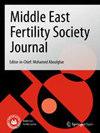Predictive strategies for oocyte maturation in IVF cycles: from single indicators to integrated models
IF 1.3
Q4 REPRODUCTIVE BIOLOGY
引用次数: 0
Abstract
Accurate prediction of oocyte maturation is a critical determinant of success in in vitro fertilization-embryo transfer (IVF-ET) procedures. This review provides a comprehensive analysis of the various predictive approaches employed to assess oocyte maturity, including single indicators, combined indicators, and predictive models. Factors such as ovarian reserve, patient characteristics, and controlled ovarian hyperstimulation (COH) strategies can significantly influence oocyte maturation rates. Single indicators, including hormone levels, ultrasound parameters, and clinical parameters, have been extensively studied. However, their predictive power may be limited when used in isolation. Combined indicators, integrating multiple parameters, have demonstrated improved predictive performance compared to single indicators. Additionally, predictive models and algorithms, such as machine learning and deep learning models, have emerged as promising tools for assessing oocyte maturity. These models leverage advanced statistical and computational methods to analyze complex datasets and identify patterns that can predict oocyte maturation rates with potentially higher accuracy. Despite these advancements, several gaps and limitations persist, including limited generalizability, lack of standardization, insufficient external validation, and the need to incorporate patient-specific factors and emerging technologies. The review highlights potential areas for further research, such as multicenter collaborative studies, integration of advanced omics technologies, development of personalized prediction models, and investigation of trigger time optimization strategies. Recommendations for clinical practice include utilizing a combination of indicators, adopting validated predictive models, tailoring approaches based on individual patient characteristics, continuous monitoring and adjustment, and fostering multidisciplinary collaboration. Accurate prediction of oocyte maturation holds profound implications for improving the success rates of IVF-ET and enhancing the chances of achieving a healthy pregnancy. Continued research, innovative approaches, and the implementation of evidence-based practices are essential to optimize assisted reproductive outcomes.试管婴儿周期中卵母细胞成熟的预测策略:从单一指标到综合模型
准确预测卵母细胞成熟度是决定体外受精-胚胎移植(IVF-ET)手术成功与否的关键因素。本综述全面分析了用于评估卵母细胞成熟度的各种预测方法,包括单一指标、综合指标和预测模型。卵巢储备、患者特征和控制性卵巢过度刺激(COH)策略等因素会对卵母细胞成熟率产生重大影响。包括激素水平、超声参数和临床参数在内的单一指标已被广泛研究。然而,如果单独使用,其预测能力可能有限。与单一指标相比,综合多个参数的组合指标已证明具有更好的预测性能。此外,预测模型和算法,如机器学习和深度学习模型,已成为评估卵母细胞成熟度的有前途的工具。这些模型利用先进的统计和计算方法来分析复杂的数据集,并找出可预测卵母细胞成熟率的模式,从而提高预测的准确性。尽管取得了这些进步,但仍存在一些差距和局限性,包括通用性有限、缺乏标准化、外部验证不足以及需要结合患者特异性因素和新兴技术。综述强调了进一步研究的潜在领域,如多中心合作研究、整合先进的全息技术、开发个性化预测模型以及调查触发时间优化策略。对临床实践的建议包括:综合利用各种指标、采用经过验证的预测模型、根据患者个体特征定制方法、持续监测和调整以及促进多学科合作。准确预测卵母细胞成熟对提高体外受精-胚胎移植的成功率和增加健康妊娠的机会具有深远的意义。持续研究、创新方法和循证实践的实施对于优化辅助生殖结果至关重要。
本文章由计算机程序翻译,如有差异,请以英文原文为准。
求助全文
约1分钟内获得全文
求助全文
来源期刊

Middle East Fertility Society Journal
REPRODUCTIVE BIOLOGY-
CiteScore
2.80
自引率
0.00%
发文量
32
审稿时长
45 weeks
 求助内容:
求助内容: 应助结果提醒方式:
应助结果提醒方式:


